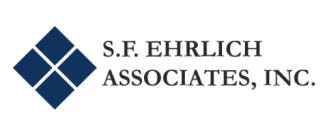Will we be able to live in retirement in the same fashion as we’re currently living?
This is the question everyone approaching middle age wants answered. From our perspective, there is a significant difference between merely retiring as opposed to planning for a successful retirement. One of the reasons we ask clients for current spending information is to help determine how much annual income, adjusted for inflation, they will require during retirement. Only when that number is calculated can we begin to determine the asset levels that would help achieve that goal and how those assets should be invested.
Are there investments that guarantee I'll never lose money?
Yes. There is some confusion regarding guaranteed investments and what, exactly, is protected. For starters, the only guaranteed investments which exist, safe from default, come in the form of government securities: T-Bills, notes, and bonds. Investment in a government security guarantees payment of any interest due, along with the face value of the security, at maturity. The guarantee is a default guarantee, backed by the full faith, credit and tax levying power of the United States government. The guarantee does not extend to the market value of the longer term issues (notes and bonds) which can rise and fall in response to current market interest rates. To be assured of receiving face value the owner must hold the note or bond until full maturity.
Alternatively, bank deposits such as Certificates of Deposit and other interest-bearing accounts are insured by the Federal Deposit Insurance Corporation (FDIC). A bank deposit is insured against loss in the event of a bank failure. Because bank deposits are not market investments, they are not subject to the same market risk. FDIC insurance is limited depending on the type and titling of accounts. In general, each depositor is insured up to $250,000 for all singly titled accounts, another $250,000 in aggregate for jointly held deposits and $250,000 more for aggregated retirement accounts (e.g., Bank invested IRA's).
Deposit accounts are not invested assets in the same way that IRA and mutual fund assets are invested. Invested assets are subject to market risk. The FDIC insurance protects the owner should the Bank fail, but will not protect the owner in the event invested assets, such as IRA's, lose market value.
Government securities and bank guaranteed deposit accounts serve a purpose for many investors. With the exception of TIPS (Treasury Inflation Protected Securities) they do not, however, protect against inflation. Though the loss of purchasing power is rarely as sudden as a precipitous drop in financial markets, over the long term, the erosive power of inflation can have just as devastating an effect on your financial reality. Because the asset is guaranteed, comparatively little interest is earned. Where there is virtually no risk, there is also virtually no reward.
What is a "diversified portfolio"?
A diversified portfolio is a portfolio that has been invested across a number of different asset classes. One of the several criteria used in selecting these asset classes is correlation. Correlation refers to the behavior of each asset type (stock, bond, etc.) in different market situations. If two assets are highly correlated to one another they can be expected to respond to market changes in similar fashion. If the response is to drop in value, there is no diversification benefit to owning both assets. Instead, identifying assets that do not respond in mirror fashion helps to protect a portfolio by buffering the downward price movement of certain holdings. If Stock A, for example, were to drop in price while Stock Z rose on the same economic news, they would be negatively correlated to one another and Stock X would help by gaining value to counter Stock A's loss.
In most cases, assets neither react in exact opposite nor move in lockstep fashion with each other. Typically, one holding will maintain value while another might gain or lose slightly. The objective is to be certain you're acquiring securities that can weather a financial storm better than any individual asset: "Don't put all your eggs in one basket" applies to the financial markets. When a portfolio includes assets that are not highly correlated with other investments, a portfolio becomes more diversified and wealth is better protected from swings in market conditions.
How do I know my assets are safe with an independent advisor?
Most registered investment advisors are in the business of advising and managing client accounts; they are not in the business of custodying (physically safekeeping) the assets they manage. The custody of those accounts should be and typically is handled by an independent, third-party custodian. Regardless of which mutual fund, ETF, bond or stock you may own, the accounting, reporting, and housing of the account which owns those assets is maintained by the custodian. As with your personal checking account, your investment asset accounts generate monthly or quarterly reports identifying the investments, transactions, and balances. Depending upon the custodian (we use Charles Schwab & Co., Inc., a SEC-registered and FINRA member broker-dealer/custodian), you probably have round-the-clock access via internet or 24-hour phone support allowing you to verify and confirm any assets in any of your accounts.
In addition, Schwab offers "The Schwab Security Guarantee" that provides the following: "Schwab will cover 100% of any losses in any of your Schwab accounts due to unauthorized activity." The Guarantee doesn't cost clients anything and applies to accounts at Schwab that are managed by independent investment advisors such as S.F. Ehrlich.
While advisors may be given access by their clients to trade within these accounts, their ability to unlawfully remove funds is prevented by authorization controls required by the custodian. Just as you would not leave your car keys in the ignition when you run into the mall, each investor should recognize their responsibility in reviewing their account statements in a timely fashion and should feel free to ask any questions of their advisor if they do not understand what they're looking at. Our mantra: "It's YOUR money".
Can fee-only financial planning actually save me money?
Fee-only financial planning is a totally transparent expense; clients of a fee-only financial planner know exactly how much they are paying for the services being rendered.
Since we do not invest client funds into mutual funds with sales fees, an immediate saving for many clients is the amount they may be (unknowingly) paying in commissions. Whether those fees are up-front, deferred, or annual, they may actually be more costly than the cost of retaining a planner. (And utilizing investments such as exchange-traded funds that have lower annual expenses than many mutual funds also contributes to annual savings.) Studies also demonstrate a diversified portfolio that is rebalanced on a regular basis (a routine practice for most fee-only financial planners) yields a higher annual return.
But the matter of cost savings is secondary to an even more important question: is anyone making certain your assets are working towards your retirement goal? With a fee-only financial planner, the planner’s fiduciary responsibility is to his or her client, not to a brokerage or insurance company.
Why choose S.F. Ehrlich?
As members of the National Association of Personal Financial Advisors (NAPFA) and also a NAPFA Registered Financial Advisor, we are bound by a strict code of ethics. Being a member of one of the nation's leading fee-only financial planning associations requires us to abide by stringent continuing education requirements and to work solely for the best interests of our clients. Since we cannot sell any investment products, clients are assured of complete objectivity in the financial planning process.
As a small local firm, our clients get individualized and personal service. We address their needs, manage their assets, and help guide them on the pathway towards and through retirement. Typically, our work extends beyond finances, as we get involved in helping to solve many of the hurdles that life presents. (We’ve even helped clients determine if they had the wherewithal to change careers, and then supported them while they did it.)
Our clients are typically busy people who want to simplify their lives. They would rather spend time with their families and careers than try to keep up with the ever-changing world of personal finance. They look to us for reassurance they are on the road to achieving their financial goals. Through frequent contact and regular client newsletters, we strive to provide that support.
We spend considerable time learning about prospective clients to determine whether they might be a good fit for our firm. We’re looking to work with individuals who are willing to delegate responsibility, allow others to handle their personal finances, and then be confident and comfortable in doing so.
How can we make our first meeting productive?
Our first meeting is centered on identifying those concerns, goals, or issues which prompted you to contact us. Are you thinking about retirement, educating your children, a career change, or another life-cycle event? Each scenario presents choices and solutions that can be multi-faceted. The goal for the first meeting is to get to know you; when we understand you and where you would like to go, we can better determine whether we would be a good fit to help you get there.
What’s next?
If we fit the description of a fee-only financial planning practice you might like to work with, we invite you to call us at 908 789-1100, or go to the CONTACT US tab and send us an e-mail.

